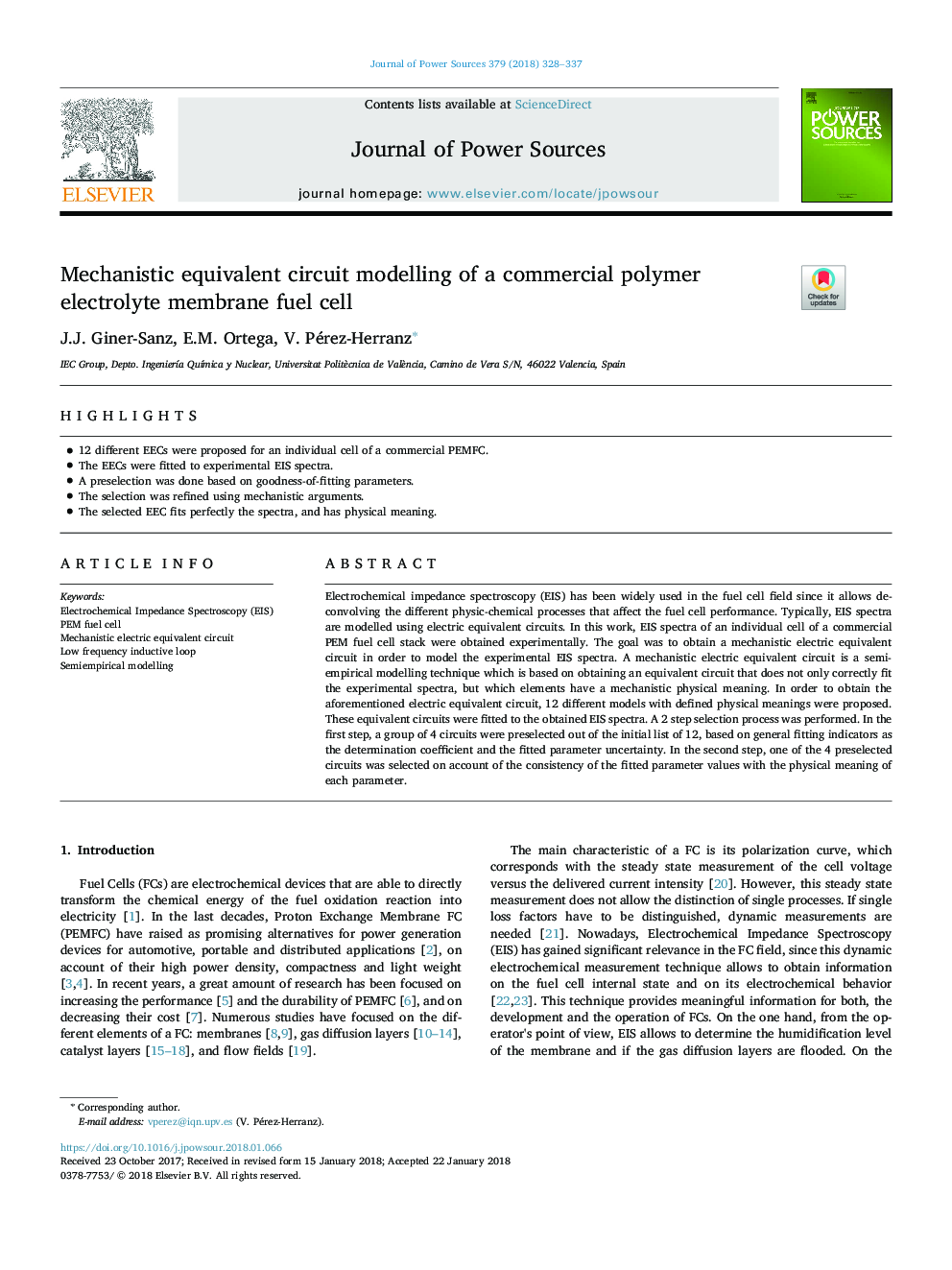| Article ID | Journal | Published Year | Pages | File Type |
|---|---|---|---|---|
| 7725796 | Journal of Power Sources | 2018 | 10 Pages |
Abstract
Electrochemical impedance spectroscopy (EIS) has been widely used in the fuel cell field since it allows deconvolving the different physic-chemical processes that affect the fuel cell performance. Typically, EIS spectra are modelled using electric equivalent circuits. In this work, EIS spectra of an individual cell of a commercial PEM fuel cell stack were obtained experimentally. The goal was to obtain a mechanistic electric equivalent circuit in order to model the experimental EIS spectra. A mechanistic electric equivalent circuit is a semiempirical modelling technique which is based on obtaining an equivalent circuit that does not only correctly fit the experimental spectra, but which elements have a mechanistic physical meaning. In order to obtain the aforementioned electric equivalent circuit, 12 different models with defined physical meanings were proposed. These equivalent circuits were fitted to the obtained EIS spectra. A 2 step selection process was performed. In the first step, a group of 4 circuits were preselected out of the initial list of 12, based on general fitting indicators as the determination coefficient and the fitted parameter uncertainty. In the second step, one of the 4 preselected circuits was selected on account of the consistency of the fitted parameter values with the physical meaning of each parameter.
Related Topics
Physical Sciences and Engineering
Chemistry
Electrochemistry
Authors
J.J. Giner-Sanz, E.M. Ortega, V. Pérez-Herranz,
